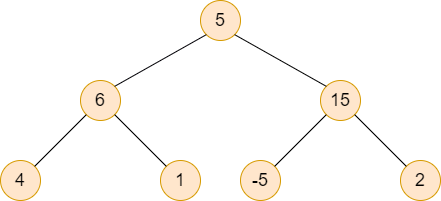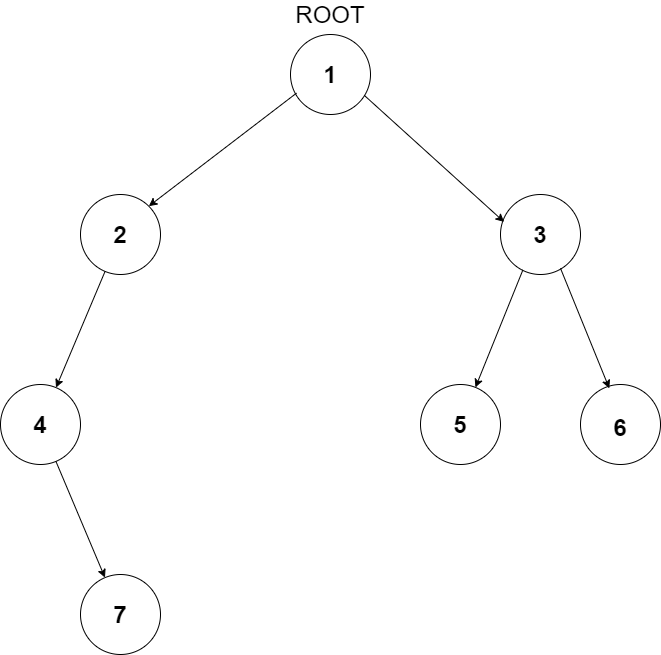Finding Paths
Kevin has written some integers on a paper. He then selects some integers and draws a line between them. Fortunately, his diagram represents a binary tree. Today, his friend challenged him to find the paths that start from root and end at the leaf in his diagram whose sum is exactly equal to the number ‘K’. But, Kevin has another important piece of work and so, he appoints you to do his task.
All you have to do is to find the paths in his diagram whose sum is exactly equal to the number ‘K’.
For Example:

Consider the above binary tree. If ‘K’ is 15 then the required paths are [5, 6, 4] and [5, 15, -5].
Input Format :
The first line contains an integer 'T' which denotes the number of test cases or queries to be run. Then the test cases are as follows.
The first line of each test case contains an integer ‘K’ which represents the number ‘K’.
The second line of each test case contains elements of the tree in the level order form. The line consists of values of nodes separated by a single space. In case a node is null, we take -1 in its place.
For example, the input for the tree depicted in the below image would be :

1
2 3
4 -1 5 6
-1 7 -1 -1 -1 -1
-1 -1
Explanation :
Level 1 :
The root node of the tree is 1
Level 2 :
Left child of 1 = 2
Right child of 1 = 3
Level 3 :
Left child of 2 = 4
Right child of 2 = null (-1)
Left child of 3 = 5
Right child of 3 = 6
Level 4 :
Left child of 4 = null (-1)
Right child of 4 = 7
Left child of 5 = null (-1)
Right child of 5 = null (-1)
Left child of 6 = null (-1)
Right child of 6 = null (-1)
Level 5 :
Left child of 7 = null (-1)
Right child of 7 = null (-1)
The first not-null node(of the previous level) is treated as the parent of the first two nodes of the current level. The second not-null node (of the previous level) is treated as the parent node for the next two nodes of the current level and so on.
The input ends when all nodes at the last level are null(-1).
Note :
The above format was just to provide clarity on how the input is formed for a given tree.
The sequence will be put together in a single line separated by a single space. Hence, for the above-depicted tree, the input will be given as:
1 2 3 4 -1 5 6 -1 7 -1 -1 -1 -1 -1 -1
Output Format:
For each test case, return all the paths that start from the root and end at the leaf and whose sum is exactly equal to ‘K’. All the paths should be printed in a separate line and should be enclosed in a square bracket.
Output for every test case will be printed in a separate line.
Note:
You don’t need to print anything; It has already been taken care of. Just implement the given function.
Constraints:
1 <= T <= 10
1 <= N <= 10^3
-10^5 <= K <= 10^5
-10^5 <= DATA <= 10^4
Time limit: 1 sec
CodingNinjas
author
2y
Depth First Search and Backtracking
The basic idea is to perform Depth First Search on the given binary Tree and keep track of the current sum and whenever reached the lead node check if the sum become...read more
Help your peers!
Add answer anonymously...
Top JPMorgan Chase & Co. Machine Learning Engineer interview questions & answers
Popular interview questions of Machine Learning Engineer
>
JPMorgan Chase & Co. Machine Learning Engineer Interview Questions
Stay ahead in your career. Get AmbitionBox app

Helping over 1 Crore job seekers every month in choosing their right fit company
65 L+
Reviews
4 L+
Interviews
4 Cr+
Salaries
1 Cr+
Users/Month
Contribute to help millions
Get AmbitionBox app